High Energy Workouts for a Head Start on Swimsuit Season
It's easier to work hard when you’ve got a game plan. Here are some options to help keep you moving until the last second of your workout!
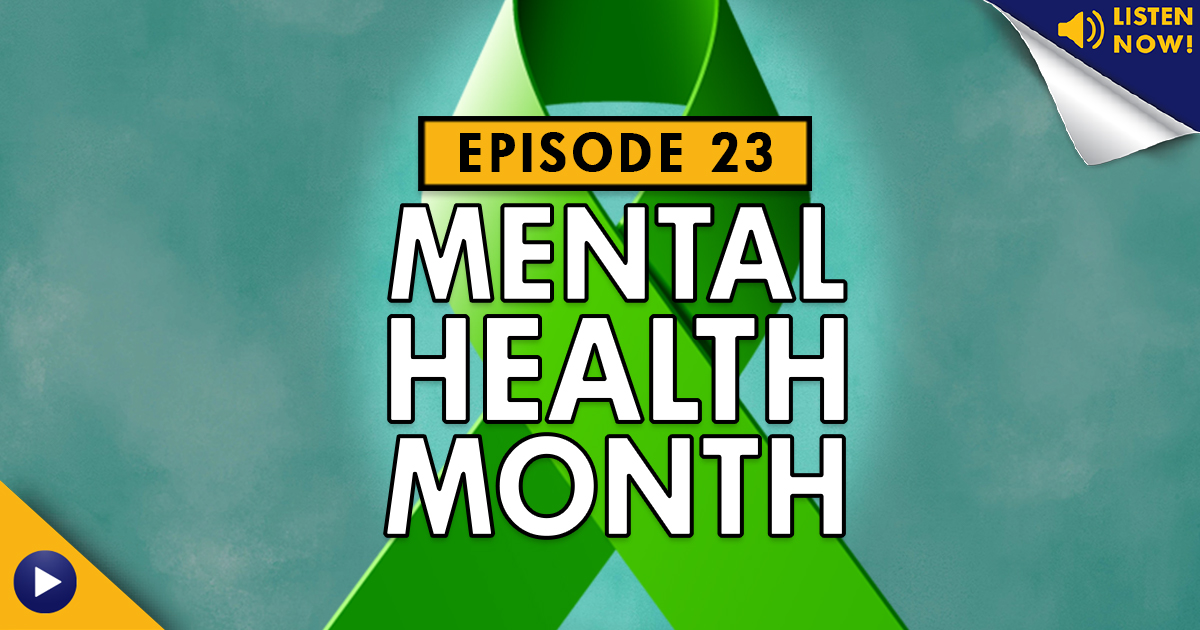
Welcome to the 23rd episode of the Living Healthy Podcast, presented by LA Fitness.
May marks the start of Mental Health Month, and so on today’s episode, we bring back Dr. Neel Doshi, to help us understand exactly what mental illness is, the effects of mental illness on the body, and how social media and technology play into these conditions.
We also discuss ways to reach out for treatment and the future of mental health in general. Dr. Doshi is double board certified in Adult Psychiatry and Child & Adolescent Psychiatry, with Kaiser Permanente of Orange County. He joined us about 6 months ago to discuss this topic, and we had yet another great conversation with him!
For more information on ways you can get involved for Mental Health Month, please visit http://lafitnesscares.com/.
How Are We Doing?
This podcast should not replace any exercise program or restrictions, any dietary supplements or restrictions, or any other medical recommendations from your primary care physician. Before starting any exercise program or diet, make sure it is approved by your doctor.
Introduction
Begins at 0:01
Dr. Neel Doshi, double board certified in Adult Psychiatry and Child & Adolescent Psychiatry, with Kaiser Permanente of Orange County, joins the show
Begins at 0:39
What is Mental Health?
0:48
Why is Mental Health Becoming So Mainstream?
2:48
How Can We Bridge the Empathy Gap?
4:20
What Are the Best Ways to Engage with Someone Struggling with a Mental Illness?
5:27
How Do Mood and Emotions Correlate with Mental Health?
7:42
How Much Does Your Environment Affect Your Mood?
9:09
Humor’s Impact on Mental Health
10:32
Natural Defense Mechanisms: How They Play a Part in Our Emotions
12:28
Social Media and Technology: How It Affects Mental Health
13:06
Mental Health Apps
14:25
Which is a Bigger Threat to Positive Mental Health: Social Media or Living a Sedentary Life?
17:35
Are There Certain Types of Exercise That Are Best for Improving Mental Health?
20:26
How Long Should You Exercise to Reap the Benefits?
21:52
Does Everyone with Mood Issues Need to Be in Therapy?
24:03
The Future of Mental Health
25:10
Actionable Advice
26:36
Outro
28:17
It's easier to work hard when you’ve got a game plan. Here are some options to help keep you moving until the last second of your workout!
Does liberally salting your food help you pump more iron in the gym? Registered Dietitian, Debbie James, investigates the claims!
It’s Multiple Sclerosis Awareness Month! Here is what you need to know about exercise safety with MS.

Mental health includes our emotional, psychological, and social health and well-being. It is important at every age. According to the WHO (World Health Organization), mental health is “… a state of well-being in which the individual realizes his or her own abilities can cope with the normal stresses of life can work productively and fruitfully, and is able to make a contribution to his or her community.” It is important to note that the WHO stresses that mental health “is not just the absence of a mental disorder.”
Mental Health is important because it affects us every day, in almost everything we do. It impacts how we function, interact with others, and how we feel about ourselves and our lives. Furthermore, it can have a profound impact on our bodies and physical health as well.


For children and adults, learning how to identify and understand our emotions is a vital component in improving mental health. Emotions are not bad – however, we need to better teach people to identify and understand their emotions and most importantly, what to do with them. We also must teach and develop personal coping skills so that one can process and use their emotions in a healthy and productive manner.
There are several key things we can all do to improve and maintain our mental health which includes keeping a regular schedule, especially ensuring adequate sleep. Getting regular exercise (even low intensity like walking counts) every day. Try to reduce the amount of time you sit for, as they say, “sitting is the new smoking”! Try and eat a healthy well-balanced diet with lots of fruits and vegetables. Connecting with others and helping others can also improve our mental health. Lastly, don’t be afraid to get professional help if you need it!
It doesn’t always feel like it, but there is help everywhere. A few national resources that are available to anyone are the National Suicide Hotline (1-800-273-8255), Textline (741741), and online chat. The National Alliance of Mental Illness (NAMI.org) is a great resource not just for those who are struggling with their mental health, but also for their families. For the LGBTQ+ population, Trevor Project has a hotline (1-866-488-7386), Textline (678678), online chat and multiple other online resources too.
Individuals should also contact their healthcare provider to learn more about the resources that they offer. At Kaiser Permanente, our mental health resources include a wide range of services for all ages from medication management, individual therapy, group therapy, wellness phone coaching and in-person classes through our Center for Healthy Living as well as numerous online services.
There are also people around you that are there to help, whether it’s a teacher, a coach, a religious leader or spiritual counselor, a supervisor at work or an Employee Assistance Program.
Kaiser Permanente also has a great website called FindYourWords.org which provides resources and help for those wanting to help someone else or those looking for help themselves.
One of my favorite exercises to recommend to patients is gratitude. Thinking of three things you are grateful for every night before you go to bed has been shown to significantly improve your mood. It doesn’t have to be anything outrageous, you can be grateful for having a bed to sleep in, or for your bad day being over, or for the amazing thing that happened to you that day. But, remember just three! No more, no less, even if every night it’s the same three and kids can do it too. Try it for a week, see how you feel!
Responses contributed by Ashley Zucker, MD, Chief of Psychiatry at Kaiser Permanente in San Bernardino.
It's easier to work hard when you’ve got a game plan. Here are some options to help keep you moving until the last second of your workout!
Does liberally salting your food help you pump more iron in the gym? Registered Dietitian, Debbie James, investigates the claims!
It’s Multiple Sclerosis Awareness Month! Here is what you need to know about exercise safety with MS.
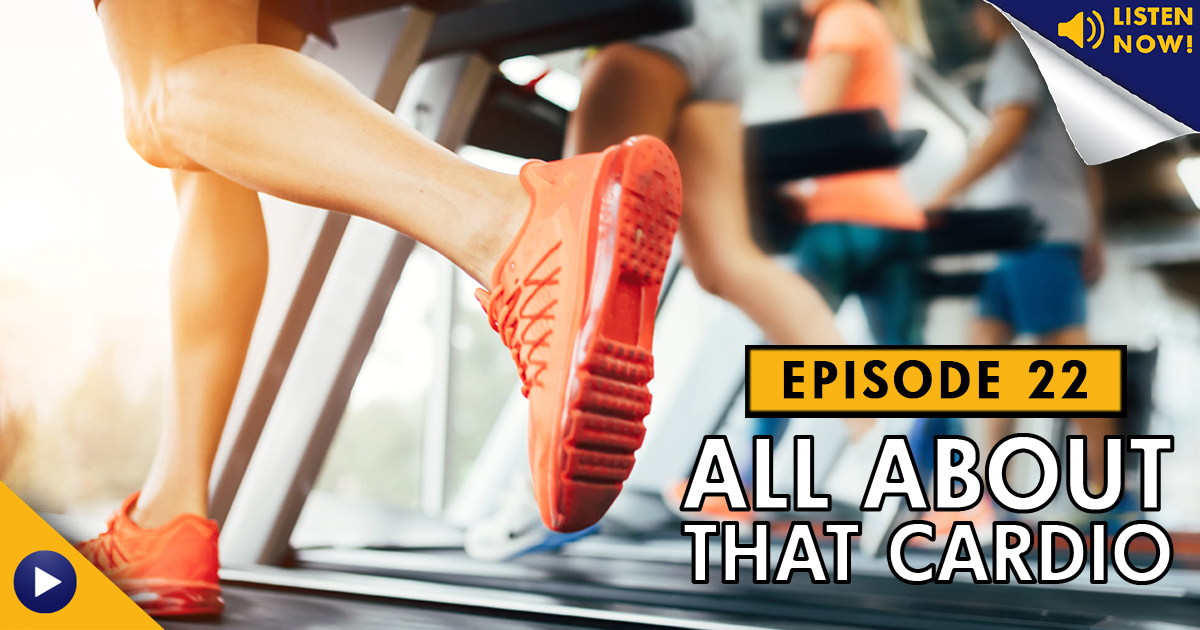
Welcome to the 22nd episode of the Living Healthy Podcast, presented by LA Fitness.
On this episode of Living Healthy, we bring back to the show LA Fitness, Personal Training Director, Tristen Alleman and, as always, listener favorite Dietitian Debbie James! They help explain the importance of establishing and maintaining a balanced workout routine and how nutrition plays an important part in this.
How Are We Doing?
This podcast should not replace any exercise program or restrictions, any dietary supplements or restrictions, or any other medical recommendations from your primary care physician. Before starting any exercise program or diet, make sure it is approved by your doctor.
Introduction
Begins at 0:01
Cardio Bunny Song
Begins at 0:42
What is a Cardio Bunny?
0:57
LAF Personal Training Director, Tristen Alleman, and LAF Registered Dietitian, Debbie James, Join the Show
1:23
Why is Cardio So Important?
1:43
What Exercises Are Considered Cardio?
2:51
What About Cardio Affects the Heart?
3:33
What Foods Are Good to Eat on Cardio-Focused Work Out Days?
4:16
Are Protein Shakes Needed on Cardio Days? Or Should They Be Saved for Strength Training Days?
6:00
Why Do Cardio Workouts Tend to Burn More Calories in Shorter Amounts of Time?
8:36
How Often Should You Include Cardio Workouts into Your Routine?
10:23
What’s Better: Cardio Before or After a Workout?
12:01
Is One Type of Cardio Better Than Another? HIIT? Cycle? Treadmill? Zumba®?
12:41
Is Caffeine Before an Aerobic Workout a Good Thing? What About Fruit Juice?
13:32
Can Too Much Cardio Damage Your Body?
15:16
NEW SEGMENT: Rapid Fire Social Media Questions from Our Listeners!
18:04
Actionable Advice
23:02
Outro
24:37
It's easier to work hard when you’ve got a game plan. Here are some options to help keep you moving until the last second of your workout!
Does liberally salting your food help you pump more iron in the gym? Registered Dietitian, Debbie James, investigates the claims!
It’s Multiple Sclerosis Awareness Month! Here is what you need to know about exercise safety with MS.
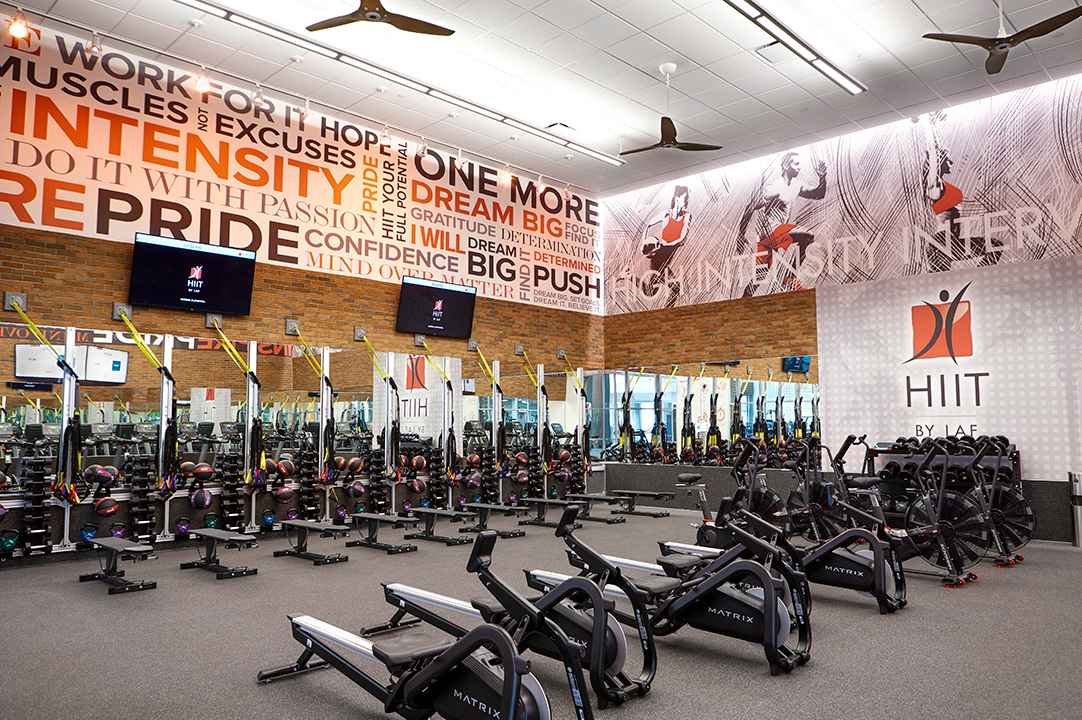
Short on time but still looking to get a solid workout in? Then it’s time to turn to HIIT by LAF®. If you aren’t sure what HIIT stands for, it’s short for high-intensity interval training – and it’s definitely something you should be adding to your workout routine.
If you’ve never heard of HIIT training, or you’re looking for a group setting to help give you that extra encouragement and push, then HIIT by LAF® is the right thing for you.
HIIT by LAF is a workout that is designed for almost every level of fitness, age, and goal type. These high-tech and high-energy workouts are led by motivating, certified fitness coaches who set the pace and vibe of the room. Each workout is 50-minutes long and comprised of a variety of functional exercises, core training, cardio interval training, and strength training. Wearing optional heart rate monitors, participants are led through five heart rate training zones, with each zone representing variations in levels of intensity that may result in participants burning up to 1,000 calories per workout, including calories that may burn even after the workout ends (results may vary).
Intense? Yes, but don’t let that word scare you away.
HIIT helps burn more calories in a shorter amount of time and if you manage to stay within the “fat-burning” zone during your workout, it can leave the body burning more calories even after the workout is over. This special “fat-burning” zone varies from individual to individual, so it’s important to know your resting heartrate and your max heartrate in order to gauge your different zones.
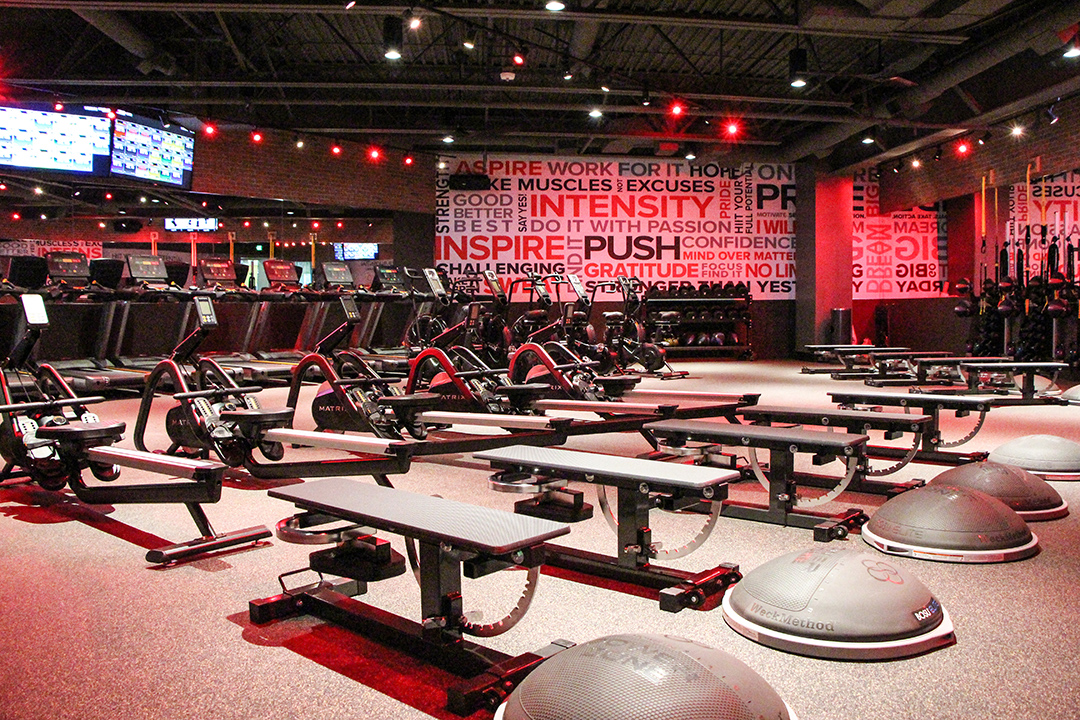
This is where MYZONE comes into play. A heart rate monitor that takes your workout to the next level.
MYZONE uses wireless and cloud technology to accurately and conveniently monitor physical activity. It monitors heart rate, calories and time exercising that converts into MYZONE Effort Points (MEPs*), with a focus on rewarding effort.
Heart rate training zones are a range of values expressed as percentages of maximum heart rate (HR max). The HIIT by LAF workout incorporates 5 heart rate training zones. If you’re interested in signing up for HIIT by LAF® classes on a regular basis, the MYZONE heart rate monitor is available for purchase at an additional cost.
Each zone is identified by zone color, heart rate percentage range, zone description, and the target amount of time that should be maintained in each zone to achieve the greatest benefits of a HIIT workout. Utilizing these zones in relation to the exercise benefits of each one aids in the development of the best programming to maximize endurance, calorie burn, and fat loss.
* MEPs (MYZONE Effort Points) are earned based on the effort exerted by the participant. Time spent in each Heart Rate Zone earns different numbers of MEPS:

HIIT is for anyone and everyone looking to take their fitness to the next level. HIIT is for moms, runners, professionals, athletes, and beginners. For moms, it’s a great escape. For runners, it’s the motivation and methodology necessary to prepare for the next run or race. For professionals, it’s the time-efficient workout when health and well-being are important, but time is tight. For athletes, it is the real-time feedback, ability to track progress and interval training necessary to improve performance. For beginners, it’s the push—the education and encouragement—necessary to reach an entirely new level of fitness.

It depends on the underlying condition of the patient/client and their baseline fitness level or physical activity status. HIIT is not for someone with a prior heart condition, who is sedentary and has not gone through proper supervised exercise testing first.
Anyone who has been very active has no cardiac risk factors, and has been screened by his M.D. about his cardiovascular fitness can definitely try HIIT and enjoy the benefits in our time-crunched environment.
The response above provided by Dr. Myla Subbarao, MD, FACC, and volunteer with the American Heart Association.
Check out our Living Healthy podcast episode on HIIT training by clicking here!
If you’re interested in learning more about HIIT by LAF®, visit welcome.lafitness.com/hiit-by-laf/.

It's easier to work hard when you’ve got a game plan. Here are some options to help keep you moving until the last second of your workout!
Does liberally salting your food help you pump more iron in the gym? Registered Dietitian, Debbie James, investigates the claims!
It’s Multiple Sclerosis Awareness Month! Here is what you need to know about exercise safety with MS.

Spring cleaning is all about getting rid of the old and making room for the new! It’s a season for change. A time to make things fresh again. But, how did spring cleaning become such a tradition?
The History of Spring Cleaning
According to an article published by Country Living1 referencing an article that was published by the Washington Post, the annual tradition of spring-cleaning dates back to the 1800s when housekeepers would have to clean the dirt that had collected in the home from the cold winter months.
Soot and grime would collect, lamps were lit with whale oil or kerosene, and needless to say, things got messy. In order to clean the mess up, windows would be opened to let in the fresh air and let out the dirt and soot. Of course, opening up the windows meant the weather had to be nicer.
However, there are also religious origins associated with spring cleaning in Jewish, Christian and Iranian customs. Each consist of a special type of cleaning that takes place in honor of a religious holiday.
And probably the most obvious of all reasons is that in the winter the weather is colder and the sky is murkier, which makes us sleepier – not to mention that the days are shorter! Energy is hard to be found during the winter months, so once the sun starts showing itself again and our bodies begin feeling recharged, it’s easier to wake up and feel an urge to start wiping away all that extra dust you may start noticing around the house.
Spring Cleaning Tips
Whatever your reason for spring cleaning is, it’s always good to try switching things up, whether that’s spring cleaning your home, your fitness routine, or your nutritional habits! (Did those warm winter comfort foods add on a few extra pounds?)
Check out our list of some helpful ways you can spring clean your health and fitness routines!

Spring Clean Your Fitness Routine Tip #1
Here comes the sun, do doo do do.
Staying active doesn’t have to just mean staying active in the gym! Living a healthy lifestyle means staying active indoors and outdoors! When the weather starts looking nice, head outside for some fresh air and to try a new exercise – switching up your fitness routine can help prevent your body from hitting a weight loss plateau.
Spring Clean Your Fitness Routine Tip #2
Out with the old, in with the new!
Are you a cardio person or more of a weightlifter? Chances are you probably prefer one over the other, but both are needed for a balanced fitness routine! Try switching it up and add some more weight training to your routine or cardio if that’s where you normally struggle. Change can do the body good, and there’s no better time than spring cleaning to get started with something new!


Spring Clean Your Fitness Routine Tip #3
HIIT the Ground Running
Spring cleaning your fitness routine doesn’t necessarily mean trying an entirely new activity. It could be something as simple as switching up your interval training. Perhaps try shorter, high-intensity workouts a couple times a week and combine those with longer, steadier workouts throughout the week.
Find a HIIT by LAF® studio near you.
Spring Clean Your Fitness Routine Tip #4
The Early Bird Gets the Gains?
A workout is a workout no matter the time of day, but if you’re used to going to the gym after work, try going first thing in the morning – dare we suggest even before your morning cup of coffee? Or if you’re used to mornings, try going after work and sweating off some of that post work stress. Changing up the time you go to the gym helps keep things fresh and can help break you out of your normal routine.


Spring Clean Your Fitness Routine Tip #5
Spring into Sports!
Are you a fan of sports? Try joining a recreational sports league to help keep yourself active while also trying something new! Sometimes, participating in sports is a great way to forget you’re working out while also having fun. LA Fitness offers a variety of club leagues – ask the front desk about it today!
Spring Clean Your Fitness Routine Tip #6
Group Fitness Fun
If you haven’t tried a Group Fitness class yet, now is the time! There are countless options available at various times throughout the day. Try an activity you’ve never done before and give it a chance – it could become one of your new favorite exercises. Plus, having a class support group and trained instructors cheering you on can help keep you motivated on days that you’re losing steam.
Find a group fitness class for you, here!
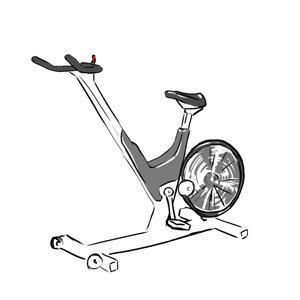

Spring Clean Your Fitness Routine Tip #7
We. Dare. You.
Are you up for a challenge? Sign up for a race! It’s a great way to train for an event and embrace your competitive side. Plus, cardio is great for the heart and building endurance. Even if you’re not a fan of long distance running, there are plenty of 5ks available year around. Check out what’s local to you!
Spring Clean Your Fitness Routine Tip #8
Grab a Moving Buddy.
Friends who train together make waves together. Swap out after work happy hour for flex hour at the gym. Not only does having a gym buddy help keep you accountable, but it can be a lot more encouraging than working out solo. Try inviting a friend to join you for a sweat sesh and set mini challenges for each other for some friendly fun.
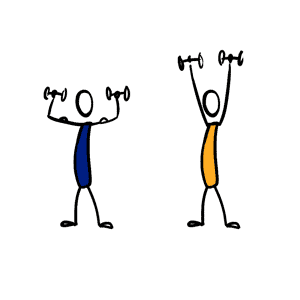

Spring Clean Your Fitness Routine Tip #9
Train. Harder.
Do you feel like you have a pretty good grasp on fitness by now? Try elevating your fitness routine by working with a personal trainer. Adding a trainer to your routine can help you train harder, add variety to your workouts, and push you to step outside your comfort zone.
Sources:
It's easier to work hard when you’ve got a game plan. Here are some options to help keep you moving until the last second of your workout!
Does liberally salting your food help you pump more iron in the gym? Registered Dietitian, Debbie James, investigates the claims!
It’s Multiple Sclerosis Awareness Month! Here is what you need to know about exercise safety with MS.
Be the first to know about exclusive
content, deals and promotions